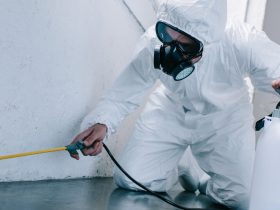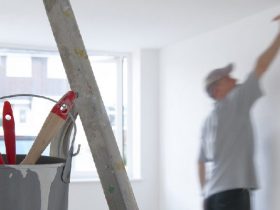In communities across the country, ensuring workplace safety is a top priority for employers, employees, and regulatory agencies alike. Radon, a radioactive gas commonly found in indoor environments, presents a significant health risk when present at elevated levels. This community case study explores the importance of commercial radon testing in commercial buildings, highlighting collaborative efforts to enhance workplace safety and protect employee health.
Background:
Commercial buildings serve as hubs of economic activity, housing businesses, offices, and public facilities. However, many commercial buildings may unknowingly harbor elevated levels of radon gas, posing health risks to occupants. Recognizing the importance of addressing this issue, stakeholders in the community have come together to implement radon detection measures and safeguard workplace safety.
Collaborative Initiatives:
- Education and Awareness Campaigns:
Community organizations, government agencies, and local businesses collaborate to raise awareness about the dangers of radon exposure and the importance of radon detection in commercial buildings. Educational workshops, seminars, and outreach programs are organized to inform employers, employees, and building owners about the risks associated with radon and the steps to mitigate exposure.

- Regulatory Compliance Assistance:
Regulatory agencies work closely with commercial building owners and managers to ensure compliance with radon testing and mitigation requirements. By providing guidance on regulatory standards, conducting inspections, and offering resources for radon detection and mitigation, these agencies support efforts to improve workplace safety and protect public health.
Community Engagement:
- Volunteer-Based Radon Testing Programs: Volunteer groups and community organizations organize radon testing drives and initiatives to encourage commercial building owners to test for radon gas. Volunteers provide assistance with radon testing kits, data collection, and interpretation, empowering building owners to take proactive steps to address radon exposure risks.
- Collaboration with Local Businesses: Local businesses play a crucial role in promoting radon detection and mitigation efforts within the community. Building owners, property managers, and tenants collaborate to implement radon testing programs, share best practices, and invest in radon mitigation solutions to ensure a safe and healthy work environment for employees and visitors.
Impact and Outcomes:
Improved Workplace Safety: Through collaborative efforts and proactive radon detection measures, commercial buildings in the community have achieved improved workplace safety and indoor air quality. Timely detection of elevated radon levels has enabled building owners to implement mitigation measures, reducing radon exposure risks and safeguarding employee health.
Community Resilience: The community’s collective response to radon detection reflects its resilience and commitment to promoting health and safety. By prioritizing collaborative initiatives, education, and regulatory compliance, stakeholders have demonstrated their dedication to creating a safe and supportive environment for all community members.
Conclusion:
The community’s efforts to enhance workplace safety through commercial radon testing, buildings exemplify the power of collaboration, education, and proactive measures. By working together to raise awareness, ensure regulatory compliance, and implement radon testing and mitigation programs, stakeholders in the community have made significant strides in protecting employee health and promoting overall well-being. As the community continues to prioritize workplace safety, its commitment to addressing radon exposure risks serves as a model for other communities seeking to create safer and healthier environments for all.









Find Us on Socials